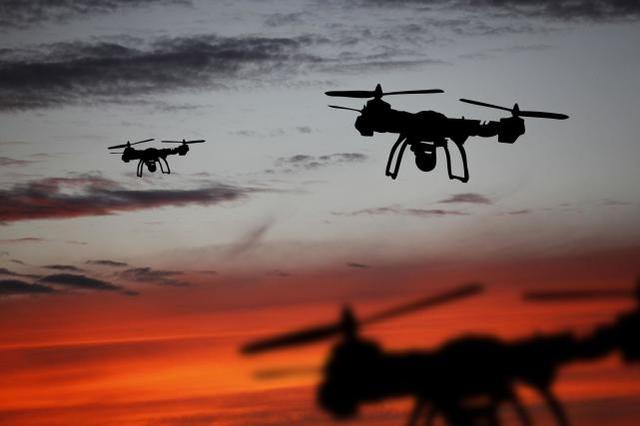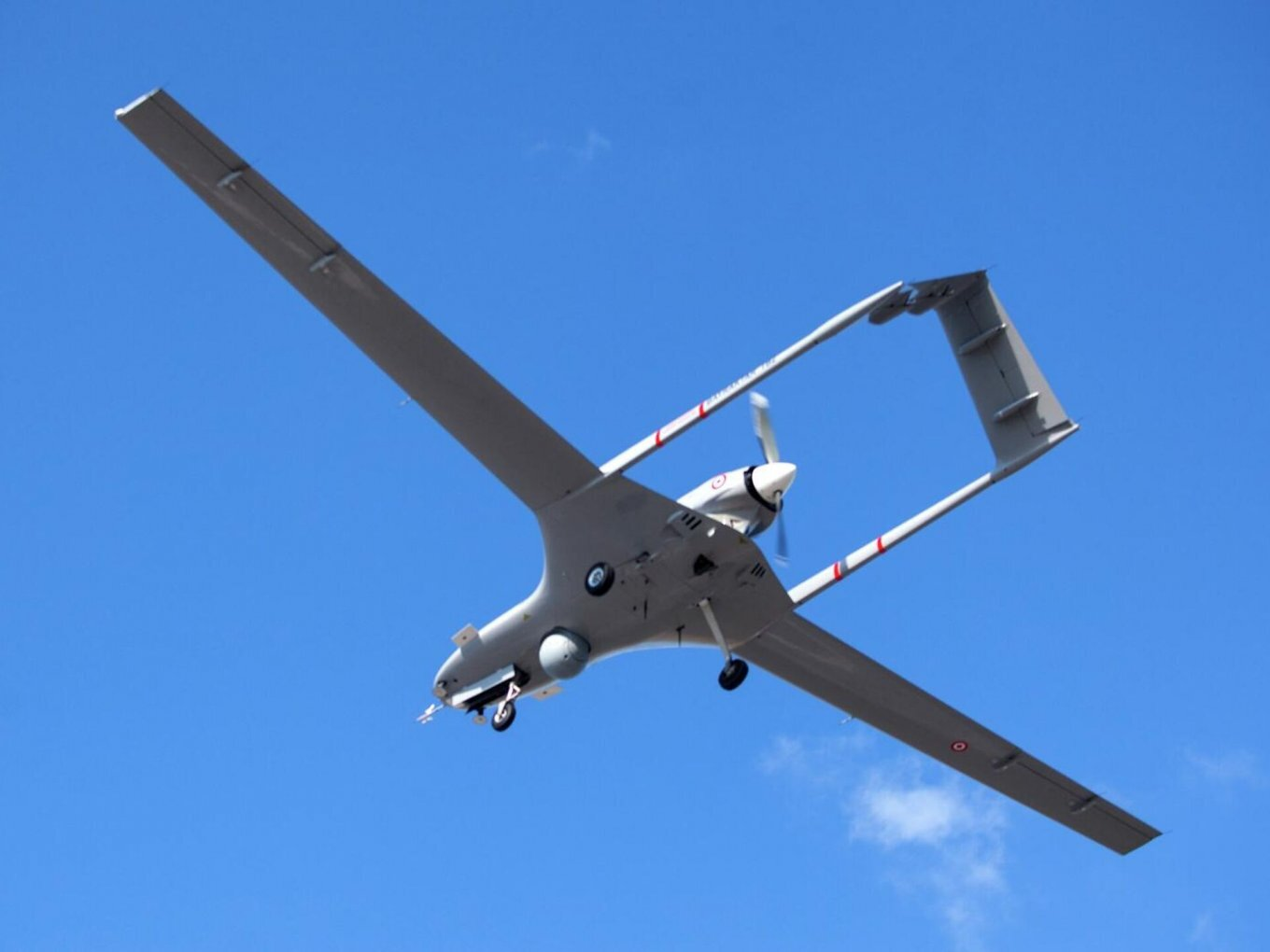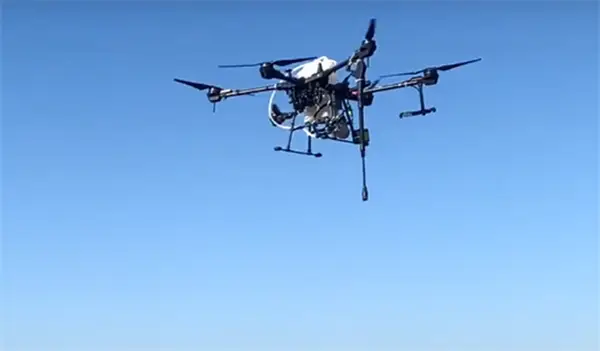
After the Fukushima nuclear disaster, it has become particularly important to develop robots that can perform precise and long-lasting operations in high radiation environments and narrow enclosed spaces. Meanwhile, in disaster prone Japan, with the widespread application of robots and drones in disaster sites and infrastructure inspections, the development of effective control systems for these robots and drones has also attracted much attention.
In order to meet the operational needs in these harsh environments, such as waste furnace operations, disaster exploration and rescue, and material transportation, the Fukushima International Research and Education Institute in Japan is committed to the research and development of robots and drones. These harsh environments not only include high radiation areas, but also encompass various complex and dangerous scenarios.
When dealing with various harsh environmental work requirements, such as waste furnace operations, disaster exploration and rescue, and material transportation, the Fukushima International Research and Education Institute in Japan is not only committed to the research and development of robot technology, but also actively promotes innovation in drone technology. These harsh environmental conditions are diverse, including situations without outdoor light or low visibility, high radiation levels, radio communication disruptions, and operations in terrain conditions such as rubble, mud, and forests.
The future goal of this institution is to achieve wireless communication while also having the ability to autonomously return to a recyclable location in the event of radio wave interruption. At the same time, the goal of unmanned aerial vehicles is also to achieve high performance, such as long-term flight and high loading capacity. To achieve these goals, the organization plans to further advance research on the autonomy and intelligence of robots and drones, as well as the development of performance requirements in harsh environments. In addition, we will also research and develop technologies for coordinating operations between multiple robots and drones. In order to comprehensively grasp the research and development trends on a global scale and provide direction for future research, the institution commissioned three societies, including the Japan Mechanical Society, to conduct a survey. Among them, the survey on the development status of the world's and Japan's most advanced unmanned aerial vehicles will focus on the core issue of "the current situation and challenges of the world's most advanced unmanned aerial vehicle development".
Chapter 1: Rotorcraft Drones
1.1 Body form of rotary wing unmanned aerial vehicle
This section conducts in-depth exploration through research on the world's top drones, combined with literature from authoritative academic journals worldwide in the past few years. For example, in p.7, we provided a detailed analysis of flight stability, aerodynamics, and structural stability, with a particular emphasis on the superiority of the H-type drone form. At the same time, detailed explanations were given on the non flat hexacopter of p.8, the inclined quadcopter of p.9, and the unmanned aerial vehicles with adaptive shape change function introduced in p.11-12, thus demonstrating the current development status and challenges faced by the world's most advanced unmanned aerial vehicle technology.
1.2 Power unit of rotary wing unmanned aerial vehicle
This section provides a general introduction to the power system of rotary wing unmanned aerial vehicles, covering key components such as motors, propellers, electronic speed controllers (ESC), batteries, and engines. Although these powertrain components are constantly evolving, this section does not delve into their latest developments. At the same time, we provided a brief explanation of the content known to the public, without involving cutting-edge investigations and research. Although many efforts have been made in related fields to improve performance and significant technological advancements have been made, this section does not introduce these cutting-edge research and development achievements. In addition, this section did not explore the latest research trends in hybrid propulsion, fuel cells, and future challenges.
1.3 Aerodynamics of rotary wing unmanned aerial vehicles
This section focuses on the aerodynamics of rotary wing unmanned aerial vehicles, covering both classic and latest research achievements. However, most of these contents are general explanatory content and do not delve into cutting-edge research. However, we have also introduced some advanced measures, such as the silencing of propellers, but most of these measures are still limited to the domestic research field and lack a grasp of global trends. Furthermore, this section did not address the exploration of future topics.
1.4 Guidance Technology for Rotorcraft Drones
This section mainly focuses on the self-discipline, intelligence, and group control technologies that are the key research areas of the F-REI project. Although it involves the author's evaluation of relevant literature, unfortunately, due to the lack of visual displays such as charts, readers may need to conduct additional searches of references to gain a deeper understanding. At the content level, this section explores multiple key areas such as obstacle avoidance, landing, group flight, mobile object tracking and monitoring, and machine learning. Despite conducting extensive investigations into global trends, the author still hopes to elaborate on these contents in more detail, providing readers with a more comprehensive perspective.
Navigation technology for 1.5 rotor unmanned aerial vehicles
This section also focuses on the in-depth exploration of self-regulation, intelligence, and group control technologies that the F-REI project is concerned about. Through detailed illustrations and textual descriptions, we have revealed the latest research findings and strive to ensure that the content is clear and easy to understand. It is worth mentioning that page 51 provides a detailed introduction to the warm LIO swarm flight technology, page 53 discusses the latest developments in autonomous drone navigation, and pages 54-56 delve into cutting-edge research such as BarSLAM architecture, DVS RadarSLAM, and quantum technology in ocean navigation. These contents undoubtedly provide valuable insights for future technological development and demonstrate their profound significance.
1.6 Control technology of rotary wing unmanned aerial vehicles
This section mainly introduces some common technologies in the field of drone control, such as PID control, LQR control, H ∞ control, etc. At the same time, advanced methods such as model predictive control, feedback linearization control, sliding mode control, etc. are also involved. In addition, cutting-edge technologies such as interference observer control, adaptive control, and intelligent control were also explored. However, as these contents are already recognized common knowledge in the field of drone control, this section does not delve too much into current world dynamics and the latest research results.
1.7 Communication Technology of Drones
This section delves into the essential communication technology in drone flight, covering many cutting-edge fields. Among them, the application of new communication security technologies, the integration of drone networks and blockchain, the exploration of BCDAIOD framework, the innovation of SDN architecture, as well as the architecture based on machine learning and the layered structure of Fog/Cloud/Edge, are all cutting-edge research worldwide. These contents are not only crucial for the safety of drone flight, but also demonstrate the depth and breadth of communication technology in the field of drones.
1.8 Aerial Control Technology
This section will delve into the aerial control technology of drones as flying robots during aerial operations. We will introduce various aerial manipulation methods, including manipulation targeting the above, manipulation targeting the side, and manipulation targeting the following. In addition, it will also cover other advanced aerial control technologies. These contents are of great significance for unmanned aerial vehicles to perform efficient aerial operations as flying robots in the future, and also demonstrate the complexity and diversity of aerial manipulation technology.
1.9 Self discipline and Intelligence of Drones
This section will delve into the autonomous and intelligent technologies of drones as flying robots. We will outline the relevant content of self-regulation, intelligence, and group control in the key research topics of F-REI. At the same time, we will also introduce EASA's roadmap for AI (AILevel) and the concept of Human AITeaming (EASAAIRoadmap, 2.0), as well as the lifecycle of AI applications and the structure of AI rules. In addition, we will also explore the components of achieving autonomous Autopilot and the roadmap for ISO, and summarize the challenges and opportunities for future AI technology development. These contents are of great significance for the further development and application of drone technology.
Application of 1.10 rotary wing unmanned aerial vehicles
This section delves into the applications of rotary wing drones in various fields. Specifically, it covers numerous use cases such as aerial photography, surveying, inspection, logistics, disaster response, and entertainment, and provides the latest research explanations. This not only includes some well-known use cases, but also involves research progress in cutting-edge fields. In terms of disaster response, the latest technologies for detecting people through sound, responding to emergencies such as wildfires, floods, and landslides were particularly introduced. In addition, a comprehensive analysis was conducted on 108 latest papers from the past five years, providing readers with a comprehensive reference.
Chapter 2 Fixed Wing Drones
2.1 Body shape of fixed wing unmanned aerial vehicles
This section mainly introduces the basic body structure of fixed wing unmanned aerial vehicles, including the main wing profile, main wing flat shape, and main wing installation position. Although these contents may be widely known, the exploration of their high-performance flight characteristics is still of great significance. In addition, the three-dimensional shape of the vertical tail and the design of the landing device are also the focus of this section.
2.2 Propulsion device for fixed wing unmanned aerial vehicles
This section delves into the propulsion technology of fixed wing unmanned aerial vehicles, including the latest classification of electric propulsion aircraft and the technological trends of motors. In addition, a conceptual diagram of the hybrid powertrain form was introduced, and its advantages, disadvantages, and future prospects were briefly analyzed. The research in this field is of great significance for promoting the further development of drone technology.
2.3 Aerodynamics of Fixed Wing Drones
This section provides a detailed introduction to the research progress of fixed wing unmanned aerial vehicles in aerodynamics. In particular, in-depth discussions have been conducted on key areas such as the shape of the body against crosswinds and the issues related to fixed and rotating wings. These studies are of great significance for improving the flight performance and stability of unmanned aerial vehicles.
2.4 GNC (Guidance, Navigation, Control) Technology for Fixed Wing Drones
This section provides a detailed explanation of the autonomous driving GNC technology for fixed wing unmanned aerial vehicles. It covers various advanced technologies such as linear control, nonlinear dynamic inverse control, and neural network control. In addition, key technologies such as fault-tolerant protection and deepstall protection for landing in certain areas were also introduced, providing readers with a comprehensive technical perspective.
2.5 Takeoff and recovery methods for fixed wing unmanned aerial vehicles
This section provides a detailed introduction to the technology of fixed wing unmanned aerial vehicles in takeoff and recovery. This includes various takeoff methods such as runway, hand thrown launch, catapult launch, as well as recovery methods such as fuselage landing, network recovery, parachute recovery, etc. These contents are crucial for the safety and efficiency of drones.
2.6 Application Expansion of Fixed Wing Drones
This section further explores the application of fixed wing unmanned aerial vehicles in multiple fields such as agricultural monitoring, forest fire monitoring, pipeline monitoring, etc. These application cases not only demonstrate the wide applicability of drone technology, but also provide new ideas and directions for future technological development.
Chapter 3: Vertical takeoff and landing (VTOL) type unmanned aerial vehicles
3.1 GNC (Guidance, Navigation, Control) technology unique to VTOL machines
This section provides a detailed introduction to the GNC control technology unique to vertical takeoff and landing (VTOL) unmanned aerial vehicles. In particular, in-depth discussions were conducted on the issue of transitioning from rotary wing mode to fixed wing mode for vertical takeoff and landing (VTOL) fighter jets. In addition, the importance of fault tolerance and conflict avoidance in guidance and navigation was emphasized. The research in this field is of great significance for promoting the development of VTOL technology.
3.2 Introduction to General Vertical Take Off and Landing Fighter (VTOL) Aircraft
This section provides a detailed introduction to the latest vertical takeoff and landing (VTOL) fighter jets worldwide in 2024, and provides a detailed analysis of their body specifications and performance. These pieces of information are of great significance for understanding the latest developments in VTOL technology. At the same time, the advantages and challenges in terms of propulsion were also introduced, such as the development of hybrid aircraft.
3.3 Exploration of Convergent Plane Technology
This section delves into the convergence plane technology of vertical takeoff and landing aircraft. Convergent plane refers to the part of the body where the propeller tilts, and VTOL machines with tilting mechanisms are collectively referred to as convergent plane technology. This technology is crucial for improving the stability and efficiency of VTOL models. In addition, an introduction and comparative analysis were conducted on inclined rotor aircraft and inclined wing aircraft, providing readers with a comprehensive technical perspective. There is still great potential and room for development in this field of research.
3.4 Exploration and Application Prospects of Coleopter Body
This section introduces key information such as the Coleopter body, also known as the ductile iron fan, and its application prospects in logistics. Although there are few related papers, the body still has great research value and application potential in attitude control and stability, which is of great significance for promoting the further development of unmanned aerial vehicle technology. In addition, other related content such as tail design is briefly introduced and discussed, providing readers with a comprehensive perspective and information resources
Chapter 4: Underwater and Underwater Unmanned Aerial Vehicle Technology
4.1 Characteristics and Applications of Underwater Drones
This section mainly explores the unique features of underwater drones and their applications in various fields. Underwater drones, also known as submersible drones, have the ability to conduct long-term reconnaissance, monitoring, and detection in water. They are widely used in marine scientific research, underwater resource exploration, environmental monitoring, and military fields. Meanwhile, with the continuous development of technology, underwater drones have also made significant progress in terms of operational convenience and functional diversity.
4.2 Technical analysis of waterborne unmanned aerial vehicles
This section mainly provides an in-depth analysis of underwater drone technology. Water drones, also known as surface drones, refer to unmanned aerial vehicles that can take off, land, and perform operations on the water surface. They utilize advanced propulsion systems and flight control technology to achieve efficient flight and operational capabilities on the water surface. At the same time, water drones also have many advantages, such as simple operation, strong maneuverability, and adaptability to various complex water environments. These characteristics make water drones have broad application prospects in fields such as marine fisheries, water traffic management, and environmental monitoring.
4.3 Integrated development of underwater and waterborne unmanned aerial vehicles
With the continuous advancement of technology, underwater and waterborne drone technology is gradually integrating and developing. This integration is not only reflected in the improvement of hardware devices, but also in the enhancement of software algorithms and data processing technology. Through this integrated development, underwater and surface drones can better adapt to complex and ever-changing water environments, achieving more efficient and intelligent monitoring and operational capabilities. At the same time, this also brings more possibilities for the further application of underwater and waterborne drones.
4.1 GNC technology and communication technology for underwater and surface unmanned aerial vehicles
This section will delve into the GNC (Guidance, Navigation, and Control) technology and communication technology involved in underwater and waterborne drones. These technologies are key to the precise execution of tasks and remote control of drones. Meanwhile, this section will also provide an overview of the system composition of Remote Operated Vehicles (ROVs) and their applications in communication and control, offering readers a comprehensive technical perspective.
4.2 Research Trends of Remote Operated ROVs in China
This section will focus on the research progress in remote operated ROVs in China. This type of ROV achieves underwater reconnaissance, monitoring and other tasks through remote control, and its system composition and control methods will be described in detail. Meanwhile, the tracked ROV developed by Fukuyama University will also be mentioned, showcasing its unique advantages in underwater mobility and operations.
4.3 Diversified forms and functions of "autonomous" underwater drones
Autonomous underwater unmanned aerial vehicles (AUVs) can be classified into various types based on their shape and function, such as law enforcement, hovering, and gliding. In addition, there are innovative designs such as biomimetic, bottom movable wheel type, and track type. This section will introduce these different forms of AUVs and their applications in marine scientific research, resource exploration, and other fields.
4.4 Water air hybrid drone: an innovative underwater drone technology
This section will explore a novel underwater drone technology - the water air hybrid drone. This type of drone lands in the water after flying to the target area in the air, separates the underwater drones and connects them through cables to achieve coordinated operations on and in the water. Its unique design concept and practicality will be interpreted in detail.
International competition and development trends of waterborne unmanned aerial vehicle technology
The field of underwater drones is one of the fiercely competitive areas worldwide, and the world's most advanced technology has developed to a remarkable level. This section will introduce ASV (Autonomous Surface Vehicle) technology and its international development trends, showcasing the global competitive landscape and future development trends in this field for readers.
Chapter 5: Unmanned Aerial Vehicle Sensor Technology in Extreme and Special Environments
This chapter will delve into the sensor technology used by drones in extreme and special environments. These sensor technologies are crucial for accurate positioning, stable flight, and efficient task execution of drones in complex environments. By providing a detailed introduction to different types of sensors and their working principles, readers will be able to comprehensively understand the technical response strategies of drones when facing extreme and special environmental challenges.
5.1 UAV Sensing System
This section delves into the sensing systems of drones in various environments. The book provides a detailed introduction to the electromagnetic spectrum of sensors used in drones, as well as the working principles of key sensors such as high-speed cameras and activity cameras. In addition, the challenges of sensing technology in extreme environments such as rain, fog, and interference light were also discussed. At the same time, the VIO technology that integrates visual and inertial position estimation, as well as emerging algorithms such as sensor fusion position estimation, were introduced, providing strong support for accurate positioning of drones in complex environments.
5.2 GNC Technology in Extreme Environments
This section focuses on GNC technology in extreme environments. The book introduces advanced GNC systems such as Flexrotor and AeryonLab, and explores cutting-edge technologies such as object tracking algorithms based on event cameras and liquidNeuralNetwork. In addition, emerging applications such as swarm flight technology and PilotFree3DMapping were introduced, demonstrating the outstanding performance of drones in extreme environments.
5.3 Application Cases of Drones in Extreme and Special Environments
This section provides a detailed introduction to the application of drones in extreme and special environments through multiple cases. Including unmanned aerial vehicles flying inside nuclear power plant accident buildings in high radiation environments, unmanned aerial vehicles for space exploration, unmanned aerial vehicles in high dust environments, unmanned aerial vehicles in high electromagnetic fields, etc. These cases not only demonstrate the widespread application of drone technology, but also provide valuable experience for its further development in complex environments.




